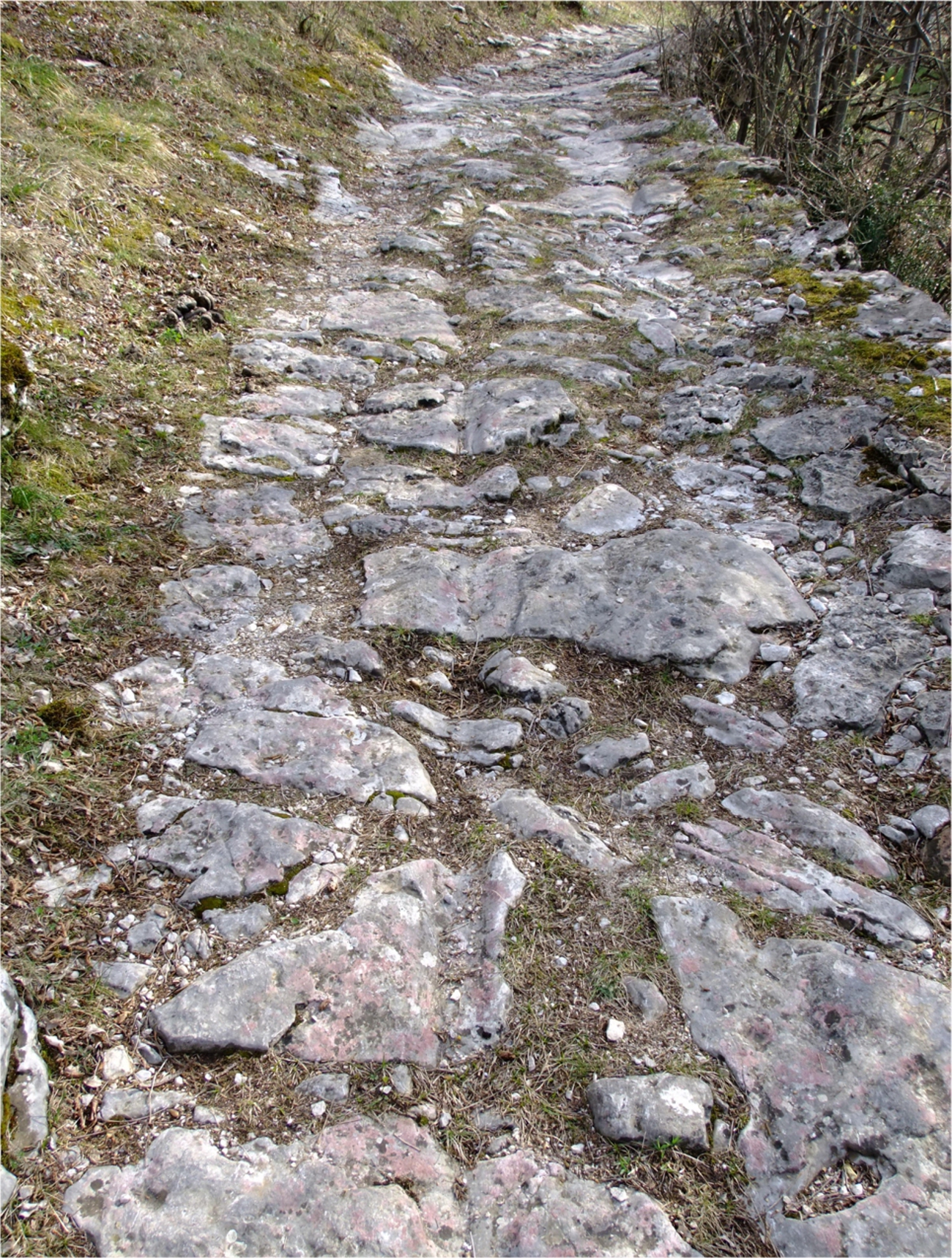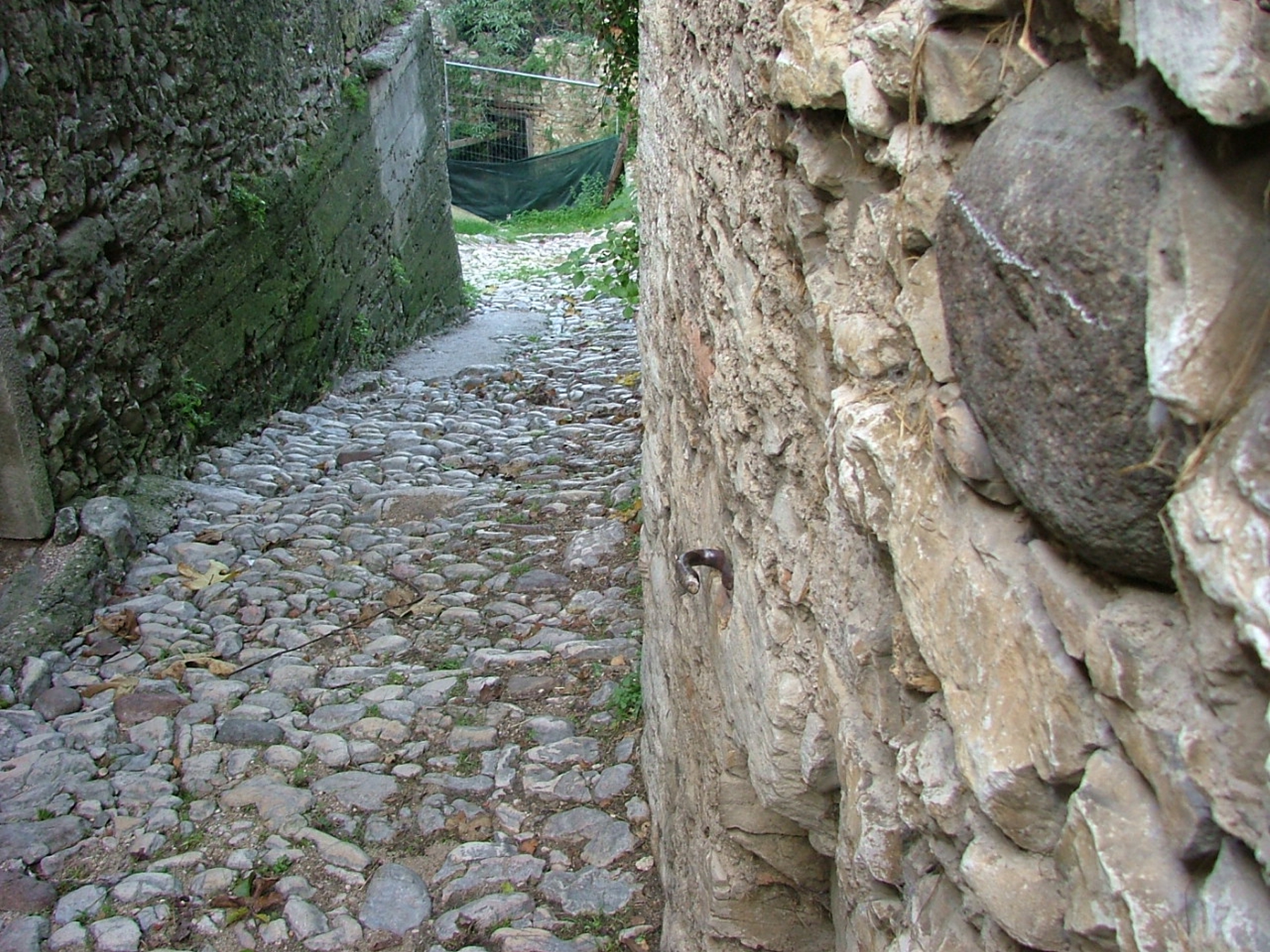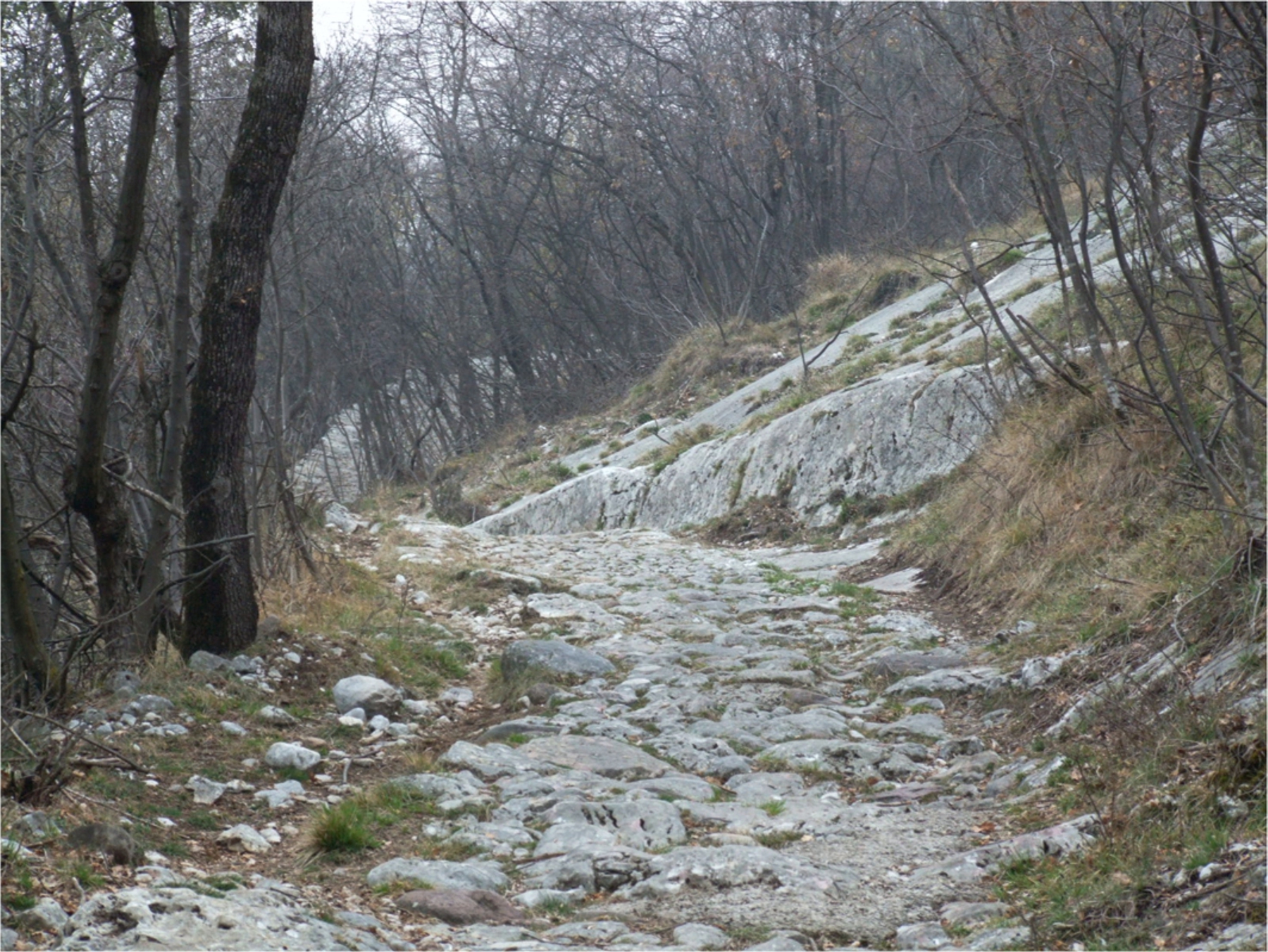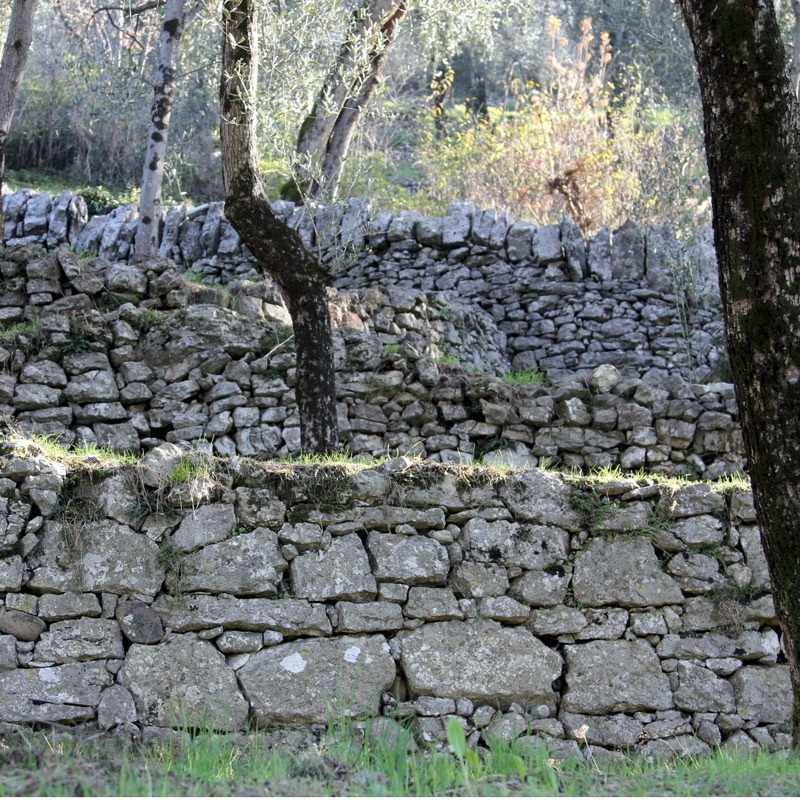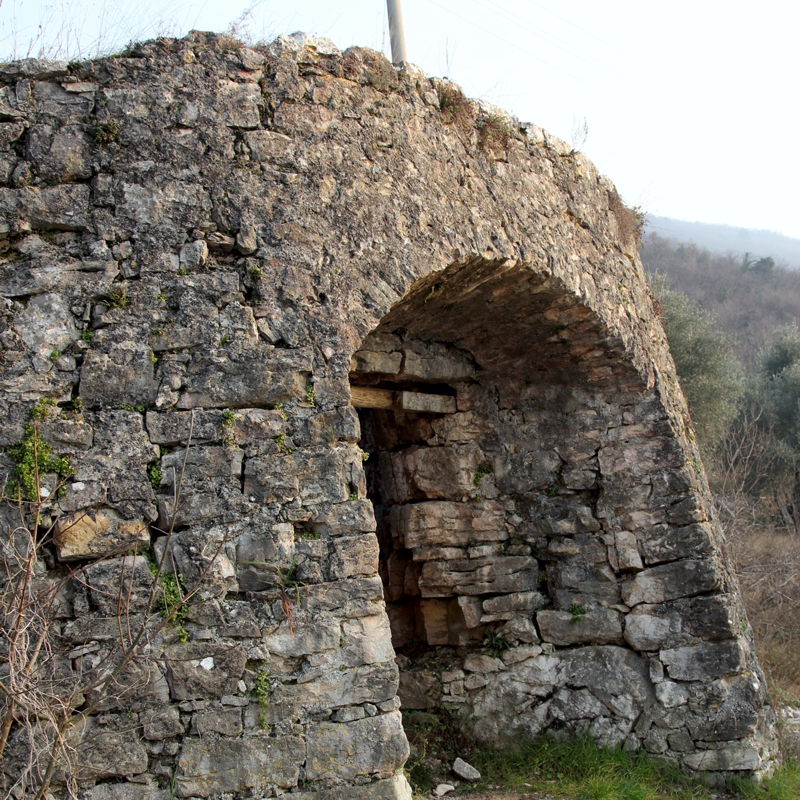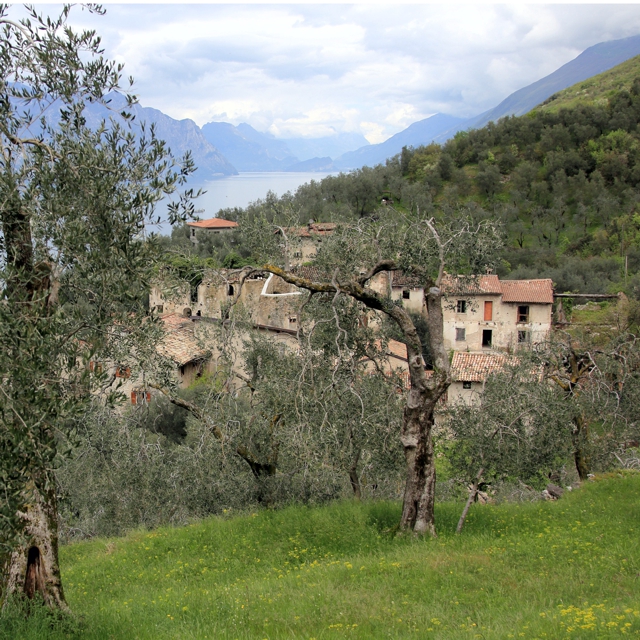The Mule Tracks
The centuries-old stone paved mule tracks that climb their way tortuously up the steep mountain slopes, still have long portions of the original and distinctive pavement. They resound with the echoes of the activities of ancient rural communities connected to olive cultivation, farming, chestnut picking and wood cutting.
Along the paved mule tracks the transport of materials and various products collected on the mountain, such as wood, hay and chestnuts, was done by sliding or dragging them with the help of a special sled made entirely of wood, called “caréta” or “barùsola”, pulled by mules or donkeys.
In order to ease the sliding of the sled along the pavement, the two pieces of wood used as runners were spread with oil dregs or with the remains of lard.
The friction caused by dragging the sled produced ruts in many parts of the pavement that are still visible. In some places along the mule tracks, where the sides are the steepest, you can still see a number of iron hooks lodged in the rocks. They were used as a break: by tying the sled to the hooks with a rope the descent could be kept under control and slowed down.

